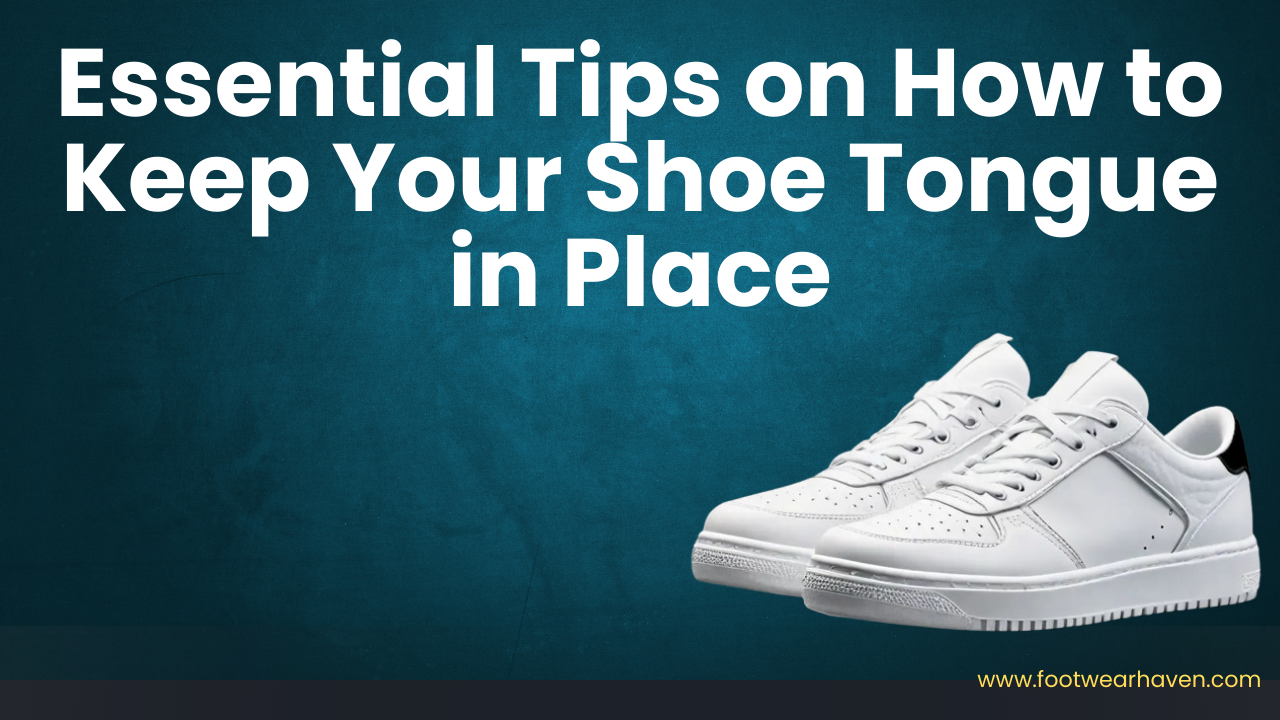The easiest way to keep your shoe tongue in place is by using the tongue loop or threading your shoelaces backwards through the same-side eyelets. This prevents the tongue of a shoe from sliding around and keeps it secure while walking or running. Most shoes tongue designs already include a small loop or slit, but if that doesn’t work, there are quick lacing hacks and DIY fixes you can try.
In this guide, you’ll learn practical methods to stop the shoe tongue from slipping so your sneakers stay comfortable and hassle-free all day.
Table of Contents
ToggleHow to Keep Your Shoe Tongue in Place and Stop It from Sliding
Sneakers have become a key part of today’s fashion scene, with people wearing them even in unexpected places like the beach. However, no matter where you wear your sneakers, one common issue is the tongue sliding from side to side, especially when running.
So, how do you keep your shoe tongue in the right place? If you’ve faced this issue before, you’re in the right place. Here, I’ll share some simple but effective tips on how to secure your sneaker’s tongue and stop it from slipping.
1. Check the Tongue for a Loop
Most shoes come with a loop on the tongue, as it’s a crucial component for keeping the tongue in place. Start by untying your shoelaces to expose the full tongue. Look for a small fabric loop, about 0.5 to 1 inch, in the middle of the tongue. If you find one, this loop can hold the tongue and prevent it from shifting.
Some shoes, instead of a loop, have vertical slits cut into the tongue. These slits work just as well to keep the tongue steady. This technique works particularly well on shoes with angled lace patterns, but may not be as effective with parallel bar lacing.
Note: In most shoes, the tongue loop is specifically designed to stop unnecessary movement. While this often works, it might not be as effective for all shoes. If this doesn’t work for your shoes, try looping the laces backwards. This method ensures the tongue stays in place. If there’s no loop at all, don’t worry—sewing one on is a simple fix!
2. Untie the Shoelaces Down to the Row Under the Loop
Begin by loosening the shoelaces, working from the top down. Pull the laces through each eyelet until you reach the row just below the tongue loop. If the laces aren’t even, this can cause uneven pressure on the tongue, making it slide.
Make sure both sides of the laces are the same length before continuing. If they’re uneven, untie them completely and start over to ensure an even fit.
3. Thread the Shoelaces Through the Loop
Depending on the space available in the loop, you may need to thread one lace under the other to keep them aligned. Be sure to pull the laces tight to avoid any slack.
Tip: Avoid crossing the laces through eyelets on opposite sides.
4. Pull the Laces Across the Eyelet on the Same Side
Now, grab the end of each lace and pull it back through the eyelet on the same side it came from. Once both laces are threaded this way, you’re almost done.
5. Finish Lacing the Shoe as Usual
Now you can continue lacing your shoes in the usual pattern, passing the laces through the eyelets as you normally would. If you prefer the standard crisscross method, keep crossing the laces as you move up toward the top of the shoe. You can use any lacing pattern you like, as long as the laces cross each other on their way up.
Initially, learning how to keep your shoe tongue in place might seem complicated, but it gets easier with practice. This is one of the quickest and simplest methods to keep the tongue secure, and it works for all types of sneakers and slip-on shoes.
FQAs (Frequently Asked Questions)
How do I stop my shoe tongue from moving?
You can keep your shoe tongue in place by using the built-in loop, threading laces backwards, or sewing on a small loop if your shoes don’t have one.
Do all shoes have a tongue loop?
No, not all shoes tongues have loops. Some may have slits or no feature at all—but you can easily DIY one by sewing a small fabric loop.
Is it normal for the shoe tongue to slide?
Yes, it’s a common issue, especially with sneakers and running shoes. The good news is that using the right lacing technique can stop the shoe tongue from sliding.
Conclusion
Keeping your shoe tongue in place doesn’t have to be frustrating. By using the tongue loop, threading laces backward, or even adding a simple DIY loop, you can stop the tongue of your shoe from sliding to the side. These easy fixes keep your shoes comfortable, secure, and hassle-free—whether you’re walking, running, or wearing sneakers casually.






